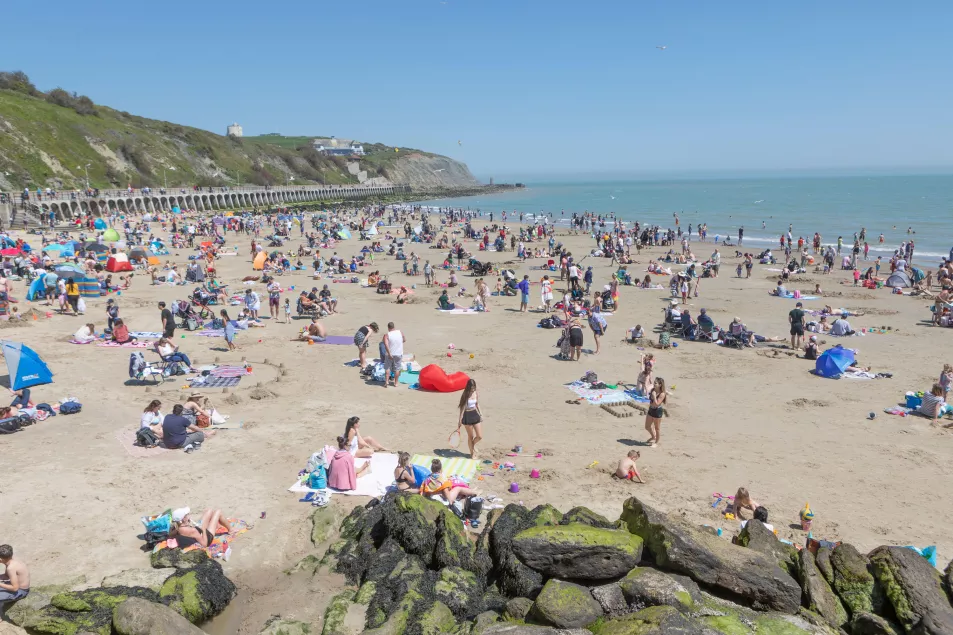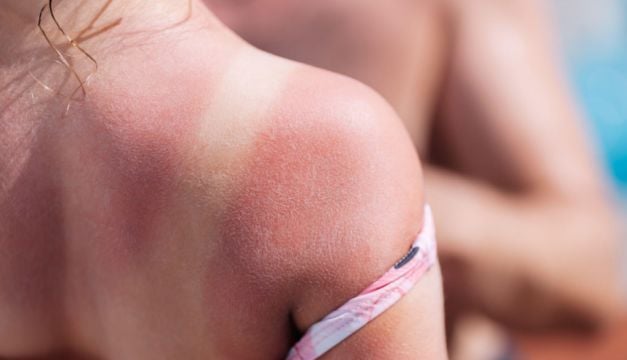After a largely disappointing spring, the coming days look set to bring some of the warmest weather of the year so far.
The dry and sunny weather is expected to last into next week, with temperatures hitting the low 20s.
Many will be heading out to enjoy the sunshine – but as ever, it’s important to protect your skin from harmful UV rays.
When it comes to tanning and sunburn, there are a variety of misconceptions that still abound, and the consequences of not following sun protection advice can be severe.
Here are six sunburn myths that could be putting your health at risk…
1. Irish sun isn’t strong enough for sunburn
Whilst many places stay warm over the Bank Holiday weekend and into next week, cooler air will temporarily affect northeastern areas of the UK pic.twitter.com/Rt6O1NyAPo
— Met Office (@metoffice) May 25, 2023
We might grumble about the gloomy weather in our part of the world, but the risk of sunburn remains for a large part of the year.
“The sun can be strong enough between mid-March and mid-October to burn you,” says Karis Betts, senior health information manager at Cancer Research UK, which is working in partnership with Nivea Sun to educate consumers on how to be sun safe.
“You’re most likely to get burnt in the middle of the day, when the sun is at its highest point, not necessarily its hottest.”
UV rays are generally strongest between 11am and 3pm, she says: “It’s wise to take a break in the shade or indoors during these hours. And remember, you can burn through clouds.”
2. You have to go red before you go brown

Our complexion can turn darker in the sun due to the release of melanin as the skin attempts to protect itself, but that doesn’t mean you need to turn lobster-red first in order to try and get a tan.
“This is one of the biggest myths in sun protection, and it contributes to skin damage and skin cancer cases,” says Abi Cleeve, MD of Ultrasun.
“The fact is that as soon as the skin reddens, it’s in trauma. A ‘trauma tan’ occurs from inadequate protection where the skin appears to tan more quickly, but hasn’t – it has burned. This only ensures that the skin peels, leaving the skin tan-less in days.”
To avoid this pattern, Cleeve recommends gradually building up your time in the sun, and using higher SPF sunblock: “Use high UVA and UVB filter SPF – a minimum of SPF30 with a UVA filter over 90 per cent will protect the skin and still tan, just more slowly [and] minimising long-term damage and peeling.”
3. The odd sunburn doesn’t make a difference
It’s easy to get caught out by a sudden blast of sunshine, but don’t be fooled into thinking that one instance of sunburn here and there doesn’t matter.
“This is something I hear a lot but unfortunately, it’s just not true,” says Betts. “Damage to our skin from the sun is the number one cause of melanoma, the most serious type of skin cancer, and skin damage from the sun builds up over time – it doesn’t go away after the burn fades.”
That’s why wearing sunblock is crucial – even more so for children. According to the Skin Cancer Foundation: “Even one blistering sunburn in childhood or adolescence more than doubles your chances of developing melanoma later in life”.
4. People with darker skin don’t get sunburnt

“Anyone can get sunburnt – including people with darker skin – but your risk of getting sunburnt and how sunburn feels will depend on your skin type,” says Beth Vincent, health information manager at Cancer Research UK.
“For people with lighter skin tones, sunburned skin is usually red, sore, and swollen. In people with darker skin tones, sunburned skin might not change colour but will often feel irritated, itchy, tender and sore.”
While people with lighter skin tones are generally at higher risk of sunburn and skin cancer, you should still use sunblock if you’ve got darker skin or a tan.
In terms of sunscreen for darker skin tones, Betts recommends: “At least SPF15 and four or five stars [for UVA protection]. Make sure to reapply it regularly and generously, especially after swimming, sweating or towelling.”
5. All body parts are created equal when it comes to sunscreen

“Burning – overexposure to UVB rays – tends to happen where the skin is closer to the bone structure, and especially where the part of the body faces directly the sun’s rays,” says Cleeve. “Tops of feet, shoulders, décolleté, top of the scalp and the nose – take extra care in these areas.”
Other easy-to-miss areas include the scalp or parting, ears, areas around swimwear such as straps, and shorts that might move or rise up through the day.
Cleeves top tip for all-over protection? “Do your sun cream naked! Then any movement in straps, shorts won’t suddenly bare unprotected skin to the sun’s rays.”
6. Aftersun products repair the damage done by sunburn
“No, they don’t,” says Vincent. “While aftersun products may soothe the unpleasant symptoms of sunburn, they won’t fix any damage that was done to the DNA inside your cells.”
If you do start to notice signs of burning, cover up or get out of the sun as soon as possible, she warns: “Don’t spend more time in the sun that day – even with sunscreen. And don’t rely on aftersun to fix the damage, because it can’t.”







